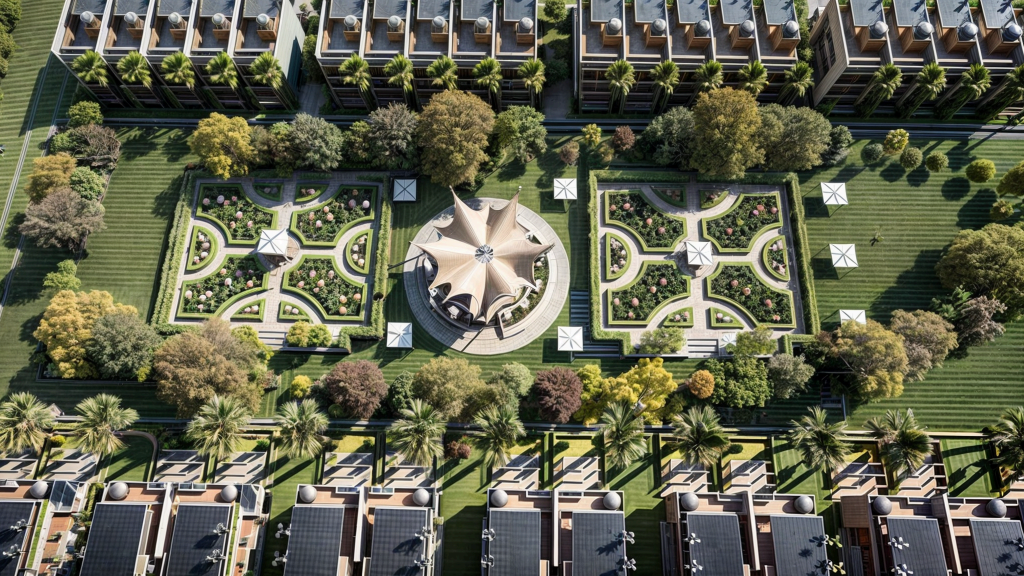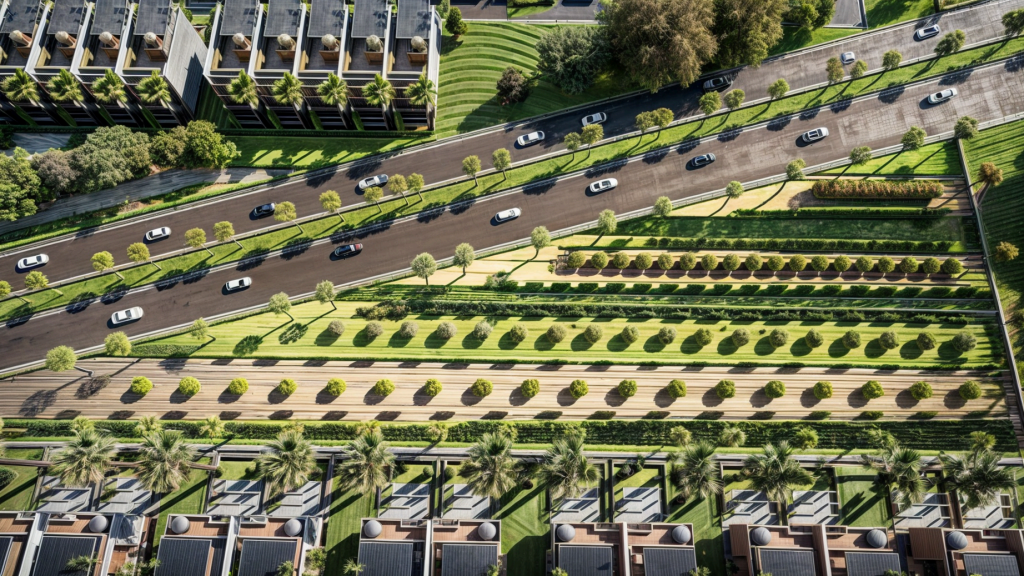Project Verdant Key Features
Green Spaces
Our community is dedicated to sustainability and environmental stewardship through a comprehensive waste management plan. This plan integrates lush green spaces and hydrophobic gardening with waste reduction, reuse, and recycling initiatives to create a cleaner, greener environment.
Key Components
1. Lush Green Spaces and Hydrophobic Gardening
We prioritize the creation and maintenance of lush green spaces that enhance the aesthetic appeal and environmental health of the community. Hydrophobic gardening techniques are employed to ensure efficient water use, promoting robust plant growth even in water-scarce conditions.
2. Waste Reduction, Reuse, and Recycling
Our waste management strategy focuses on minimizing waste generation through:
- Reduction: Encouraging residents to adopt waste-reducing habits and practices.
- Reuse: Promoting the reuse of materials to extend their life cycle.
- Recycling: Providing extensive recycling facilities to sort and process recyclable materials effectively.
3. Waste-to-Energy Systems
A cornerstone of our waste management plan is the implementation of Waste-to-Energy (WTE) systems. These systems convert organic waste into renewable energy, offering multiple benefits:
- Energy Generation: Produces renewable energy from organic waste, providing a sustainable power source for the community.
- Waste Reduction: Significantly decreases the volume of waste sent to landfills and incinerators, lowering the community’s overall waste footprint.
- Carbon Emission Reduction: Helps reduce carbon emissions by diverting organic waste from traditional waste disposal methods, contributing to the city’s climate action goals.
Benefits
- Environmental Impact: Reduces landfill use and incineration, cutting down on greenhouse gas emissions and pollution.
Resource Efficiency: Converts waste into valuable energy, promoting resource efficiency and sustainability. - Community Well-being: Enhances the community’s green spaces, contributing to a healthier, more attractive living environment.
- Economic Value: Generates energy from waste, potentially lowering energy costs for the community and creating economic opportunities through recycling initiatives.
Implementation Strategy
- Education and Awareness: Regular workshops and informational campaigns to educate residents on waste reduction, reuse, and recycling practices.
- Infrastructure Development: Establishing waste sorting stations, recycling bins, and WTE facilities within the community.
- Partnerships: Collaborating with local authorities, environmental organizations, and technology providers to optimize waste management processes and technologies.
By integrating these elements, our comprehensive waste management plan not only addresses the immediate waste disposal needs but also contributes to long-term environmental sustainability and community resilience.

